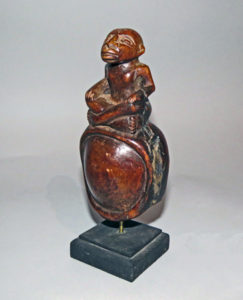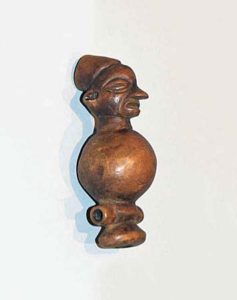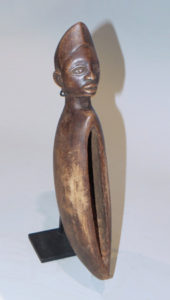Yombe
The Yombe are located in the far northwestern tip of the Democratic Republic of Congo and Republic of the Congo. Oral history indicates they migrated southward from present day Gabon as part of the Mbenza clan sometime before the 15th century and connected with the Majomba Kingdom, which flourished in the 16th century. During the 16th and 17th centuries migrations of Manyanga and then Bwenda peoples arrived in the area. Both groups eventually assimilated into Yombe communities.
Due to the thick forests the men cleared the land for crops and the women did the farming. The main economic resources of the empire were ivory, copper and the slave trade.
The Yombe people are artistically prolific. Shrines were erected to remember important ancestors, and chiefs were accorded sacred powers. Yombe pieces include the “nkisi nkonde” figures, used for oath taking during initiations. The Yombe also carved masks and drums, to be used in initiation ceremonies. Everyday objects such as combs, staffs, and fly whisks were often carved with figures as a display of wealth and power.
Source:
Baquart, Jean-Baptiste. The Tribal Arts of Africa. New York: Thames and Hudson Inc.
Yombe – Art & Life in Africa – The University of Iowa Stanley Museum of Art (uiowa.edu)




